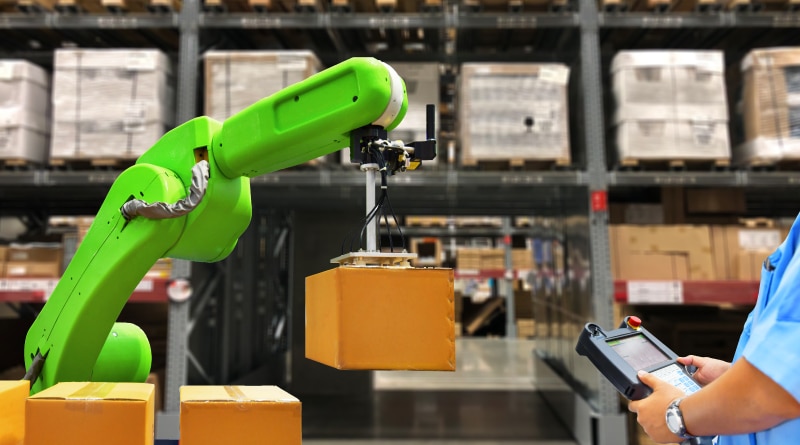
In the manufacturing industry, competition is fierce and margins mean everything. That’s why manufacturers are getting smarter about finding prospects, winning business, and serving customers in new ways. And while many (about 89 percent) have a positive outlook for the future of their businesses, they also understand that survival demands constant innovation.
To stay on top, more manufacturers in a variety of consumer product segments—from razors and eyeglasses to mattresses and sneakers—are jumping on the direct-to-consumer (DTC) bandwagon, typically via e-commerce methods. Rather than selling products solely through third parties, they’re also marketing, selling, and distributing goods directly to the consumer, bypassing the middlemen – the traditional wholesale and retail channels.
Just how strong is this market? According to a 2018 survey, 87 percent of U.S. consumers now say they would buy products directly from a brand online if given the option.
Moreover, another 2018 study examining DTC models suggests that many manufacturers are now reserving their hottest new products not for their retail partners, but for their own direct-to-consumer channels. Switching to DTC is a huge shift, though, and manufacturers should carefully weigh the benefits and risks before taking the leap.
Direct-to-consumer provides distinct advantages
DTC did not become a manufacturing trend by accident. In addition to increased efficiencies, the DTC format enables a company to have more control over the customer experience and maintain a bigger share of the profits. Key competitive advantages include:
- Control and brand clarity: DTC allows the manufacturer to control the entire branding experience, including product, packaging, and messaging – without the competition for shelf space.
- Speed to market: Manufacturers can make product changes and get to market faster without third-party channel coordination, seasonal delays, or other retail interruptions.
- Direct business intelligence: Since DTC allows them to interface with consumers, manufacturers can obtain a wealth of first-hand, valuable customer insights about buying trends, regional preferences, and product positioning.
Direct-to-consumer also comes with new risks
Along with clear advantages, DTC also brings new risk. Once manufacturers move to DTC selling, for instance, they may find themselves in competition with their retailers and wholesaler partners. In fact, a DTC strategy often changes these relationships from complementary to competitive.
“A direct-to-consumer model enables a manufacturer to have more control over the experience, but it can also introduce new risks that wholesale or retail partners would typically retain.”
– Zahi Harakeh, Manufacturing Lead, Industry Practices, Liberty Mutual Insurance
Here are three risk areas that can increase or change once DTC becomes a part of your business – and which may warrant additional business protection considerations.
- Expanding liability risk: Selling directly to consumers introduces new exposures to the manufacturer that wholesalers or retailers may typically take responsibility for as part of third-party contractual agreements. For example, this could include new product liability risks related to labeling and shipping or cyber and general liability risks that come with running an e-commerce store.
- Heightened cyber risk: A DTC operation necessarily requires handling sensitive customer and financial data, making cyber-security a major concern and priority. A security breach can not only disrupt business but may also harm a manufacturer’s reputation, particularly if customer information such as credit card data is compromised.
- Supply chain complexity: Selling to consumers makes the supply chain more complex, with additional points of vulnerability where disruption could impact the entire business. For example, instead of making several large shipments to only a few partners, a manufacturer may now be responsible for the delivery of thousands of packages to consumers’ doorsteps—as well as the risk that comes with it.
Going direct with the right risk management approach
The digital age is shifting how consumers buy from brands and disrupting the manufacturing sector in new and unexpected ways. A direct-to-consumer model might be a strategic move for your company, but with every big change comes new or increased liabilities. To keep your company on the right track, consider:
- Engaging a cross-functional team to identify potential challenges and vulnerabilities to ensure you have the needed skills and assets to manage the operational risks of direct distribution.
- Working with your insurance partners to evaluate the insurance implications, review risk controls in place, and adjust your coverage as needed.
- Contracting with third-party logistics firms to manage inventory and distribution and to mitigate potential delivery challenges and risks.
- Maintaining traditional distribution channels as your company’s DTC model gets off the ground.
In today’s global economy, trends like DTC strategies are making supply chains more complex and challenging to manage. To learn how your company can mitigate disruptions, reduce the risk of liability, and recover, read 5 ways to manage complex supply chain risks.
Related insights
This website is general in nature, and is provided as a courtesy to you. Information is accurate to the best of Liberty Mutual’s knowledge, but companies and individuals should not rely on it to prevent and mitigate all risks as an explanation of coverage or benefits under an insurance policy. Consult your professional advisor regarding your particular facts and circumstance. By citing external authorities or linking to other websites, Liberty Mutual is not endorsing them.


